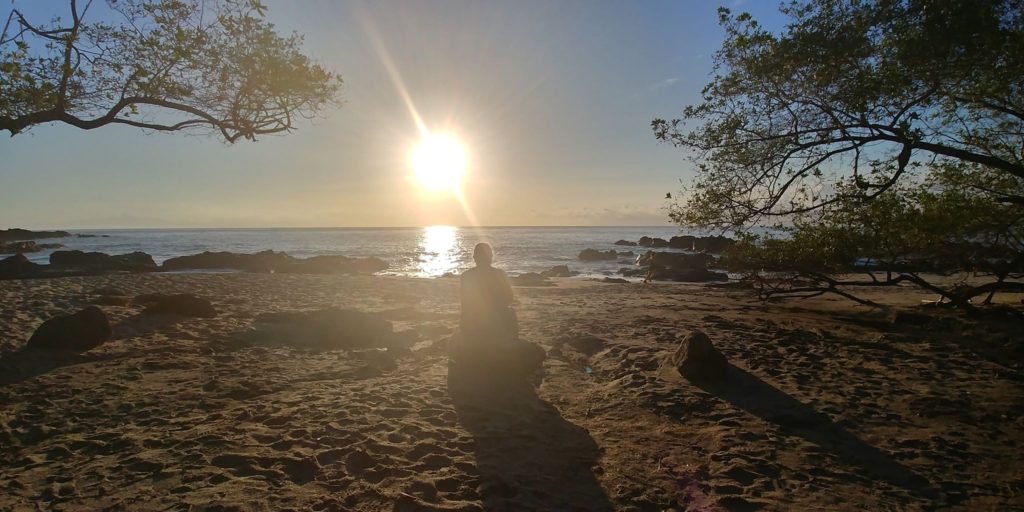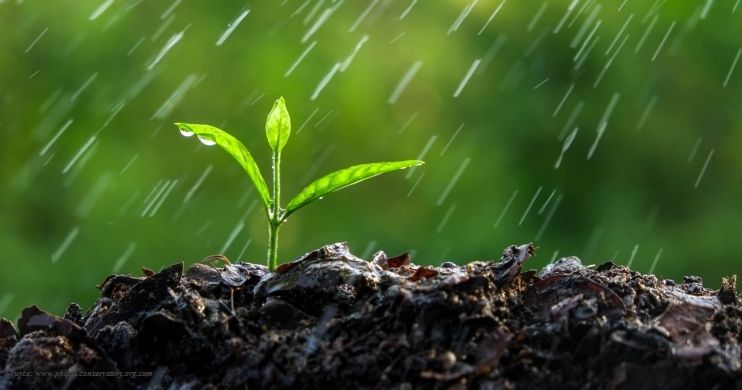
A Sit Spot — “A sit spot is simply a favourite place in nature (or looking out a window at nature) that is visited regularly to cultivate awareness, expand senses and study patterns of local plants, birds, trees, and animals. The practice supports mindfulness, builds routine and increases focus.” (www.wildsight.ca)
My friend/dancer Colleen Frances, introduced me to this phrase. She took a beautiful picture of me on a beach in Costa Rica before our morning dance class began, when I was just sitting alone, prayerfully, gratefully enjoying the morning sunrise. She told me that if we do this, pick a spot each day, the same spot, perhaps the same time, and then just open our senses to what is happening around us, the birds and the animals begin to expect us and things begin to happen. Things we would never have noticed if we hadn’t sat silently and expectantly are wondrously noticed by us.
We Are Wildness (www.wearewildness.com) says the five qualities of a perfect Sit Spot are “it is close, it has nature, it is solitary, it is safe, your attitude.” Any spot can be a perfect Sit Spot, even if it doesn’t appear that way at first.
Once we’ve chosen our spot, Colleen used the phrase RAW — Relaxed body, Alert mind, Waiting spirit, to describe the mental conditions we use when we sit at our ‘Sit Spot.’
My photographer friends often use this means of getting that perfect and unique photo. Stu McCannell, a skilled wildlife photographer, told us that the birds and insects and other animal life around us have habitual patterns that we can use to get that perfect shot. The Kingfisher returns to the same perch overhanging the river or the dragonfly has a favourite blade of grass or leaf to return to. In my garden, I know when to expect the robin for its nightly bath in my small pool.
My artist friend Suzanne Dyke, loves to sit in ‘plein aire’ and paint what she sees in front of her. Sections of my books have been written after sitting, contemplating nature and my own thoughts.
Choose a Sit Spot. Visit it every day. First, just sit, in quiet and alertness, watching and listening. You may be inspired to paint that picture, write that journal entry, take that photo, or it may just relax you and fill you with wonder at our beautiful natural world we have around us. “Stop and smell the roses” as they say. You’ll be better for it.
(Photo – Colleen Frances)
